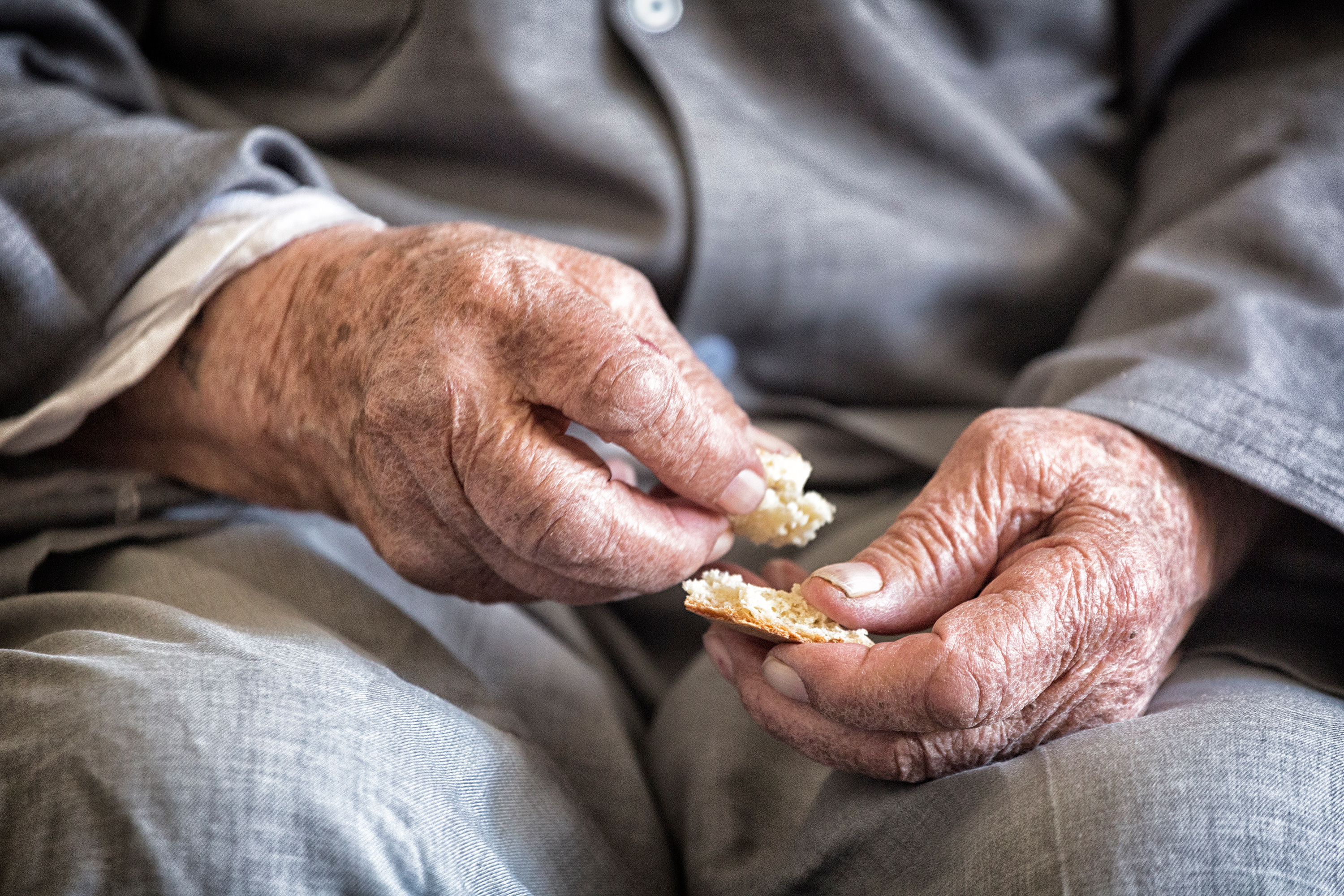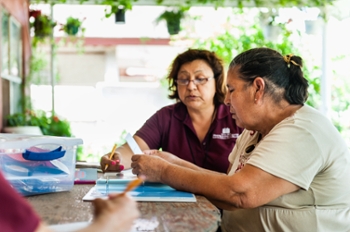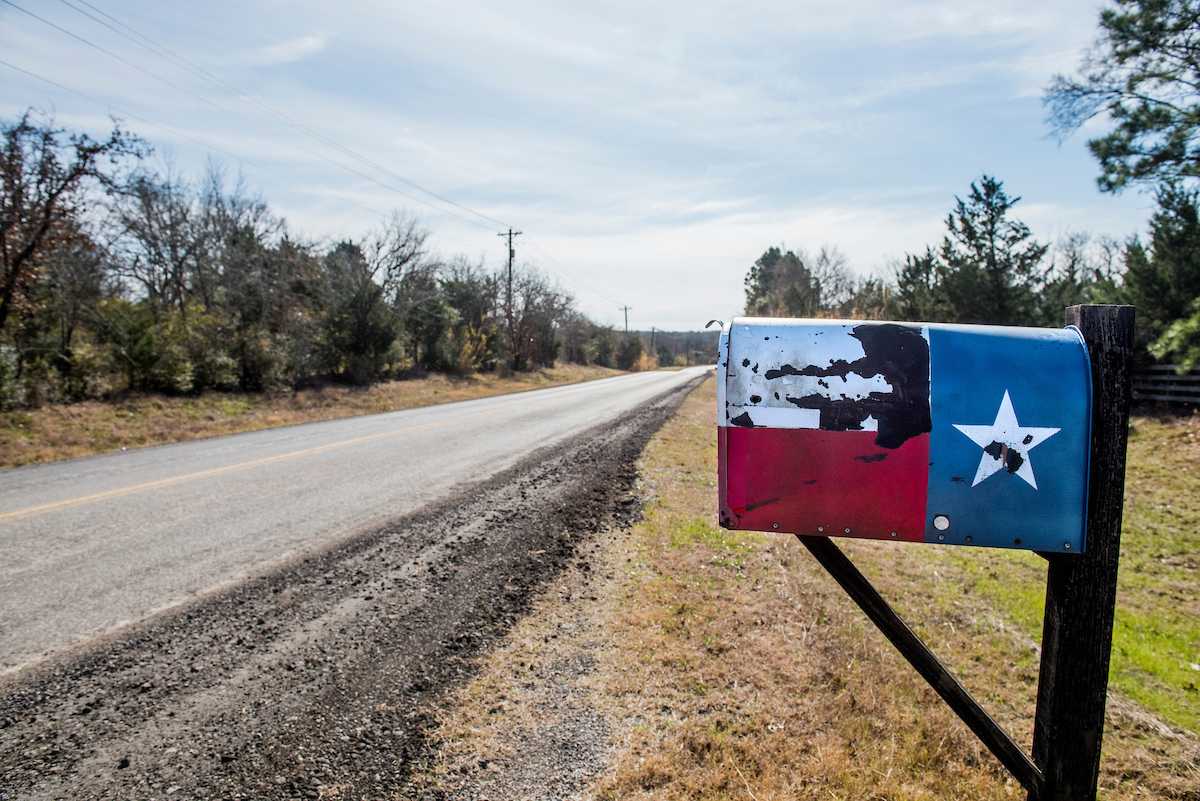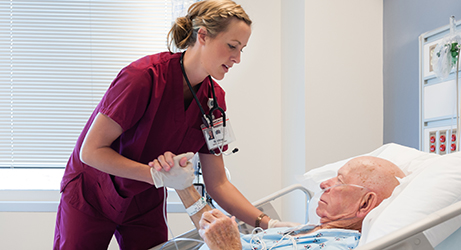Projects
Current Projects
 The Unintended Consequences of Recent Court Rulings on Rural HospitalsAlva O. Ferdinand, DrPH, JD This study will use surveys and interviews with hospital executives to explore how they are managing Disproportionate Share Hospital-related losses, where they are making budget cuts, and how these changes affect their ability to provide services. |
 The Rural Elderly Population: Demographics, Economic Status,Health Status, and Insurance EnrollmentAlva O. Ferdinand, DrPH, JD The U.S. population is aging, with rural areas having a higher proportion of elderly residents compared to urban ones. Project investigators will conduct a descriptive study to describe the demographics, economic status, health status, and insurance enrollment of the rural elderly population using data from nationally representative sources. |
 "Older, Sicker, Poorer": A Scoping Review of the Literature That Contributes to This Narrative on Rural AmericansAlva O. Ferdinand, DrPH, JD Researchers have long noted the disproportionate disease and mortality burden borne by residents of rural areas of the U.S., as well as disproportionate economic opportunities to develop wealth. Moreover, researchers have highlighted rural youth migration citing factors that push residents away from the communities in which they were raised. The project team will identify and summarize the literature on the rural youth exodus, the disproportinate burden of disease in rural areas, and variations in wealth opportunities for rural Americans. Our findings will provide the Federal Office of Rural Health Policy with a comprehensive scoping review they can utilize for policy development and advocacy. |
 Assessing the Clinical and Financial Impact of Community Health Workers in Rural AmericaAlva O. Ferdinand, DrPH, JD The public health field has increasingly used the social determinants of health framework to understand health access and outcomes. The use of community health workers (CHWs) has emerged as a potential model for helping to ensure that patient needs are met. Research assessing the impact that CHWs are having has often focused on a single site, hospital system, or state. By synthesizing these studies into a comprehensive scoping review, this project will allow for policymakers to better understand the extent to which CHWs improve health status and improve the bottom line for health systems in rural communities across the United States. |
 Identifying and Exploring the Settings That Nurse Practitioners and Physician Assistants Are Practicing in as Well as Trends in Specialization in These GroupsAlva O. Ferdinand, DrPH, JD There is evidence that nurse practitioners (NPs) and physician assistants (PAs) are branching into various specialties such as psychiatric, oncology, and pediatrics, but a contemporary understanding of how these specialties are represented in rural settings is missing, especially in light of evolving state scope of practice laws in the U.S. Researchers will use National Provider Identifier registry data to assess trends in specialty and settings and Medicare provider utilization and payment data to explore whether there have been significant changes in the number of clinician types billing for procedures. These findings will inform the Federal Office of Rural Health Policy on areas where the use of NPs and PAs can be enhanced. |
 Evaluating the Impact and Progress of the Federal Office of Rural Health Policy's Rural Public Health Workforce Training Network ProgramHRSA established the Rural Public Health Workforce Training Network Program to expand health service capacity by supporting public health job development, training, and placement in rural and tribal communities. In 2022, HRSA awarded over $47MM in funding through this program. This project will examine how grantees implemented the program and assess the impact of their program activities. |
 Texas C-Step: CPRIT Funded Cancer PreventionPrincipal Investigator for Colorectal and Lung Cancer Grants Principal Investigator for Breast and Cervical Cancer Grant Co-Principal Investigator  The Texas Cancer Screening, Training, Education and Prevention Program, or Texas C-STEP, is conducted through the Texas A&M Health Family Care. Texas C-STEP provides critical safety-net services, such as cancer screenings and certain advanced diagnostics, to uninsured, underserved and low-income Texans through funding from the Cancer Prevention & Research Institute of Texas. The 23 counties served by Texas C-STEP are primarily rural counties. |
Previous Projects
 The Intersection of Race/Ethnicity and Rurality in Pediatric Asthma: Trends and PredictorsAlva O. Ferdinand, DrPH, JD The Federal Office of Rural Health Policy (FORHP) has supported examinations of pediatric asthma previously; however, this project will provide a more contemporary examination of the pediatric asthma burden across the urban-rural continuum. Little is known about the extent that race/ethnicity and rurality play a role in the disparities associated with asthma outcomes, particularly among children. The National Inpatient Sample from 2015 – 2019 will be used to identify trends in pediatric asthma-related hospitalizations and the significant predictors of them, particularly by considering interaction terms. |
 Evaluating the Federal Office of Rural Health Policy's Community-Based Division Funding Programs: Does the Performance Improvement and Measurement Systems (PIMS) Database Adequately Capture Impact Cason Schmit, JD The Community-Based Division (CBD) of the FORHP oversees the dissemination of federal funds to community networks and providers who aim to address rural health challenges. This project will involve an examination of three types of CBD programs: 1) the Small Health Care Provider Quality Improvement Program, 2) the Rural Health Care Services Outreach Program, and 3) the Rural Health Network Development Program, and the extent to which the Performance Improvement and Measurement Systems (PIMS) Database captures the programs’ impact. |
 Trends and Predictors of Urban-Rural and Racial/Ethnic Disparities in Hospitalizations Associated with the Top Five CancersAlva O. Ferdinand, DrPH, JD Taehyun Roh, PhD This project will serve to update the FORHP's cancer research portfolio. Using recent nationally representative hospital discharge data, the researchers will examine trends and predictors of hospitalizations associated with the top five cancers in the U.S.: skin, lung, prostrate, breast, and colorectal. The research will help to understand the hospitalization burden associated with the top 5 cancers, and the extent to which this burden varies by race, ethnicity, and rurality. |
 Rural Healthy People 2030: Challenges and Opportunities for the New DecadeAlva O. Ferdinand, DrPH, JD After the completion of the data gathering phase, this project is now in the writing phase. With the consultation of rural stakeholders, the top 20 target health outcomes, based on the Healthy People 2030 objectives, will be described to identify the key health challenges that the rural population faces. Faculty and staff are drafting chapters for the publication with the help of student research assistants. The final publication is planned to be released Fall of 2023. |
 Trends and Predictors of Urban-Rural and Racial/Ethnic Disparities in Hospitalizations Tied to Acute Myocardial InfarctionAlva O. Ferdinand, DrPH, JD Marvellous Akinlotan, PhD This project aims to highlight variances in hospital-based outcomes for acute myocardial infarctions (AMIs) along the urban-rural continuum and among diverse sub-populations in the U.S. Researchers of this project will examine hospitalization trends over the 2015-2019 study period and explore the role of income level/poverty, insurance status, census region, race/ethnicity, and the nature of patients’ residence in predicting hospitalizations for AMIs. The research will update the FORHP’s portfolio on hospital-based disparities associated with AMIs. |
 Federal Agencies' Recent Collaboration and Innovation in Rural Cancer Control: A Model for PracticeAlva O. Ferdinand, DrPH, JD The investigators will conduct an examination of the multi-year effort by the National Cancer Institute (NCI) to focus on rural cancer issues and its collaboration with the Federal Office of Rural Health Policy. This project will provide critical insight into how information and conversations about disparities in cancer incidence, care and mortality across federal agencies informed the National Institutes of Health’s (NIH’s) decision to support a targeted pitch for rural cancer control support through the NCI. The project will also examine the way in which NCI’s funding mechanism and deliverables were structured and disseminated, and thoughts on how these efforts will be sustained. |
 An Innovative Approach to Targeting Rural Communities in Public Health FundingTimothy Callaghan, PhD The Centers for Disease Control (CDC) launched a new initiative to address COVID-19 related health disparities and to advance health equity among underserved and at-risk populations. The initiative included state grant funding to address the needs of rural communities. This project will provide critical insight into the evolving relationship between the Federal Office of Rural Health Policy (FORHP) and the CDC over time, lessons learned from this grant program, and how those lessons might be applied to future efforts to carve out rural-focused funds from broader grant projects. |
 Racial and Ethnic Disparities Shouldered by Rural Americans: Evidence from the Peer-Reviewed and Grey Literature on the Five Leading Causes of DeathAlva O. Ferdinand, DrPH, JD This project will identify and summarize the literature on the 5 leading causes of death particularly as they relate to racial and ethnic disparities along the urban-rural continuum. The evidence produced on this topic will support legislative policies that address social determinants and provide mechanisms by which rural Americans can achieve optimal health. |
 Updating and Exploring the Burden of Potentially Avoidable Emergency Department Visits in Rural U.S. CommunitiesAlva O. Ferdinand, DrPH, JD Marvellous A. Akinlotan, PhD, MPH This project will summarize the literature outlining the evidence on the disproportionate burden of pediatric ambulatory care sensitive conditions (ACSC)-related hospital-based care along the urban-rural continuum to date. Additionally, it will examine trends in ACSC-related ED visits longitudinally by urban/rural residence using the State Emergency Department Databases. |
 Trends and Predictors of Human Immunodeficiency Virus (HIV) in Light of the Opioid Crisis Along the Urban-Rural ContinuumAlva O. Ferdinand, DrPH, JD The investigators will explore trends in the burden of HIV and the predictors of HIV-related mortality and morbidity, particularly considering geographic regions, residence along the urban-rural continuum, and recent trends in opioid use disorder (OUD). The project will provide a contemporary and comprehensive examination of how the opioid crisis has changed the nature of the burden of HIV, especially considering differential disease burdens between residents of rural areas relative to their urban counterparts. |
 Predictors and Barriers to Achieving Immunization in Rural and Urban AreasAnnette Regan, PhD, MPH Prenatal and timely childhood immunizations offer the optimal strategy for preventing severe morbidity and mortality due to vaccine- preventable disease. We aim to evaluate possible gaps in immunization services for pregnant women and their infants in rural areas as compared to urban areas. |
 Variations in Travel Burdens Associated with Access to Care Between Rural and Urban ResidentsAlva O. Ferdinand, DrPH, JD The purpose of this project is to conduct an examination of urban versus rural disparities in travel to care patterns in the United States. Our project focuses on geographic access to medical and dental care, recognizing that burdensome travel times and distances can hinder individuals from obtaining necessary care. The study will explore the travel times and distances to care for specific sub-populations and in specific geographic settings, particularly considering urban versus rural residence and region. |
 Trends in Preterm Birth by Rural Status in the U.S.Maria Perez-Patron, PhD, MHS This project will determine rates of preterm birth by rural versus urban residence and across census regions. The project will also examine the relationship between preterm birth and maternal characteristics, including race and ethnicity as well as pregnancy complications, among women who live in counties with different levels of rural versus urban residence. |
 Rural Versus Urban Prevalence of Intimate Partner ViolenceMaria Perez-Patron, PhD, MHS Nancy Downing, PhD, RN, SANE-A Nora Montalvo-Liendo, PhD, RN, FAAN Intimate partner violence (IPV) includes physical violence, sexual violence, stalking, psychological aggression, and reproductive control by a current or former boyfriend or girlfriend, domestic partner, or spouse. This project will determine rural-urban disparities in the prevalence of intimate partner violence-related hospitalizations using a national representative sample of hospital admissions for the period between 2009-2014. |
 Community Health Worker Roles, Regulation, and Growth in Rural AmericaTimothy Callaghan, PhD David Washburn, ScD This project examines the role of Community Health Workers (CHWs) and Promotores in improving access to health care services in rural and urban environments. This project focuses on the growing and changing roles of these influential actors and how their responsibilities vary based on setting (hospital, clinic, community, etc.), location (rural vs. urban), and regulations. Proposed topics to be examined are (1) understanding the role that CHWs believe they play in health access, (2) studying how this role varies based on rurality and setting, (3) analyzing the different regulatory frameworks that states employ regarding CHWs and their activities, and (4) investigating the relationship between these regulatory frameworks and the number of CHWs across rural and urban environments in different states. |
 Disaster Planning, Preparedness, & Response for Rural Long-Term Care ProvidersTiffany A. Radcliff, PhD This project will collect data that captures how disasters affect long- term care services and patient experiences in rural areas. We will: (1) develop and pilot test a long-term care provider survey regarding emergency preparedness and response, and (2) conduct detailed case studies of disaster-impacted, rural communicates with respect to implications for long-term care services planning, recovery, and resilience. |
 Midterm Examination of Healthy People 2020: How Well Are We Doing Meeting Mortality ObjectivesJane Bolin, BSN, JD, PhD Alva O. Ferdinand, JD, DrPH Timothy Callaghan, PhD Rural Americans have historically faced significant challenges in accessing healthcare and preventive healthcare services, including ambulatory care, dental care, emergency services, and pharmaceutical services. This Year-3 study is national in scope and will examine rural versus urban differences and disparities in how the United States is meeting the Healthy People 2020 mortality objectives for the top 10 leading causes of death. |
 Rural/Urban Differences in Chronic Diseases and Delay of Needed CareJane N. Bolin, PhD, JD, BSN This project examines rural versus urban differences, among adults in the U.S., in the prevalence, incidence, stage and severity of selected chronic diseases including heart disease, stroke and several five types of cancers. There is a particular focus on examining foregone or delayed access to preventive or needed care, and whether rural residents present later and with more advanced disease states. |
 Addressing Rural Health Challenges and DisparitiesJane N. Bolin, PhD, JD, BSN Daunte' Cauley, MS Addressing Rural Health Challenges and Disparities Year 1 (PDF) In an effort to learn more about the distinctive health needs and priorities of rural communities in the Episcopal Diocese of Texas, the Episcopal Health Foundation selected the Southwest Rural Health Research Center to conduct a series of community planning and participatory group meetings in Grimes, Madison, and Robertson Counties. The goal of this project was to facilitate and support community champions’ efforts to lead sustainable Coalitions to address identified needs of communities and to move county-specific projects towards fruition. |
 Malpractice Claims Among Rural and Urban Providers: Do State Telehealth Laws Make a Difference?Alva O. Ferdinand, JD, DrPH Michael A. Morrisey, PhD This project examines trends in state telehealth laws in the U.S. and whether they have affected the malpractice environments of rural and urban environments differentially. Data from the National Practitioner Data Bank are used to determine whether changes in telehealth laws are associated with increased malpractice claims and other adverse actions among rural and urban healthcare providers. |
 Examining the Legal Landscape in Rural America: Implications for the Healthcare Workforce, Access to Care, and Population HealthAlva O. Ferdinand, JD, DrPH Michael A. Morrisey, PhD This project explores whether there are any differences between urban and rural health care providers in the prevalence of malpractice claims, clinical privilege actions, and state licensure actions. This research also explores whether variations in nurse practitioner scope of practice laws affect rural residents differentially, especially with respect to preventive care. Data used for this project include: National Practitioner Data Bank; National (Nationwide) Inpatient Sample; State Emergency Department Databases; and Area Health Resources File. |
 Are Rural Mothers and Infants Benefiting from Changes in National Women, Infants and Children (WIC) Policy?E. Lisako J. McKyer, Ph.D., MPH Ariun Ishdorj, PhD This study explores breastfeeding practices among rural WIC participants, and examines differences before and after a major federal policy change involving the WIC program. Data from the National Food and Nutrition Survey, conducted before and after (repeated cross-section) implementation of the WIC policy changes, are used to examine effects on breastfeeding rates, infant feeding practices, and food/beverage consumption among low-income infants and women in rural areas. |
 Provision of Skilled Nursing in Rural America: Skilled Nursing Facilities and Swing BedsDarcy McMaughan, PhD Swing beds and skilled nursing facilities provide critical skilled nursing services in rural areas, which are often lacking appropriate options for long term care. This study allows researchers and policy makers to understand the nature of swing bed and skilled nursing facility care provision in rural areas, and the potential benefits of swing beds to rural communities, through development of a national picture of swing beds and skilled nursing facilities in rural areas of the U.S. and comparison of swing beds and skilled nursing facilities with regard to facility, resident, and care characteristics. |
 The Burden of Diabetes in Rural AmericaJane N. Bolin, PhD, JD, BSN Alva O. Ferdinand, JD, DrPH This project determines rural versus urban differences in type 2 diabetes mellitus (T2DM) prevalence, and related morbidity and mortality in the U.S. This project examines rural versus urban differences and disparities in T2DM rates and associated demographics pre-and post-Affordable Care Act implementation. Analyses include controlled and uncontrolled diabetes and associated complications across rural versus urban geographic regions of the U.S. The project is national in scope and utilizes data from the Behavioral Risk Factor Surveillance System and selected Healthcare Cost and Utilization Project state emergency department and inpatient survey databases. |
 Diabetes EducationThe diabetes education kiosk (aka DIOSK) was developed by the Texas A&M Health Science Center School of Public Health as a self-management tool to provide diabetes education to persons with diabetes, caregivers, or those persons at risk for diabetes. Using touch-screen interactive technology, the DIOSK now consists of web-based modules on diabetes, asthma, and infectious diseases that can be viewed from any tablet, cell phone or computer. Dissemination of the DIOSK is currently funded through Healthy South Texas. |